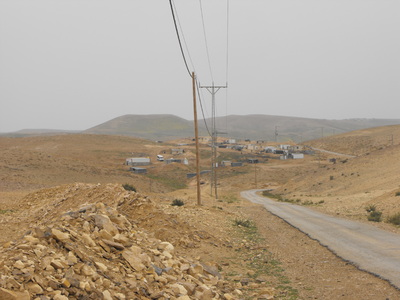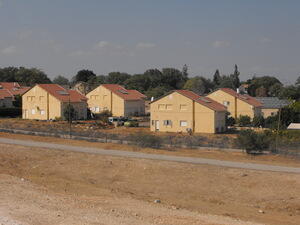In the Oslo peace talks in 1993, administration over the towns and cities in this area was handed over to the Palestinian Authority. The rural part, known as Area C, remained under Israeli rule. But this was to be a temporary measure, with a full hand-over to Palestine by the end of 1999. Area C is 61% of the West Bank, and has a Palestinian population of around 200,000. It includes the agriculturally rich Jordan Valley, and also has important mineral and stone resources, as well as strong tourism potential. A recent World Bank report saw economic development in Area C as crucial for the Palestinian economy to escape aid-dependency.
New Israeli settlements
The main development in Area C has been the growth of Israeli settlements. These are illegal under the international Law of Occupation. Israel has taken ownership of much of the rural land, declaring it to be “state land”. Passionate groups of young Israelis then set up tents surrounded by barbed wire on state land sites. These land invasions are called “outposts”. They then become more formalised, with military protection, a defensive wall with armed look-out posts, connections to a water supply, and formal roads, buildings, sewerage systems etc. Typically they are found on the high land, overlooking the valleys.
Some 300,000 Israeli settlers now live in approximately 135 settlements, and there are another 100 settlement “outposts”. The settlements get preferential access to water resources, and their residents are offered a range of financial incentives to locate there by the Israeli government (e.g. housing subsidies). Although not authorised in development plans, the settlements seem to have no difficulty gaining planning approval from the Israeli Civil Administration, the body that oversees planning in Area C.
Demolitions in Palestinian villages
It is a very different story for the Palestinian villages. Plans for village expansion to accommodate natural population increase fail to get approved. The UN head office for Palestine says that it is “virtually impossible for Palestinians to obtain permission to build”.
Then any development that does not have a planning permission is at risk of demolition. In 2011 there were 571 demolitions in Area C, in 2012 the figure was 540, and the following year 565, leading to the displacement of 805 people including 405 children. Donor-funded developments are not immune; in 2013 there were 122 demolitions of such structures, following 79 in 2012. In contrast, in England with a population of 50 million, annual demolitions are in single figures.
A new start?
I write as Israel is about to go to the polls. The election will result in a coalition government. If the coalition is the same as the previous one, then it is hard to be optimistic for future peace in this troubled region. The growth of the settlements presents a fundamental problem for any future two-state solution. It reinforces calls by some Israelis for a complete annexation of the West Bank. Advocates of this policy are also very critical of the funding from the European Union to Palestine, and of European bodies campaigning for human rights, such as the Norwegian Refugee Council.
On the other hand, if there were a new outlook, a positive climate could be created quickly by changing the planning culture and accepting the rights of Palestinians to develop their villages and access the fields that they farm. There are strong voices within Israel that advocate this line of action.
For more interessting articles by our author Cliff Hague please visit: www.cliffhague.com


